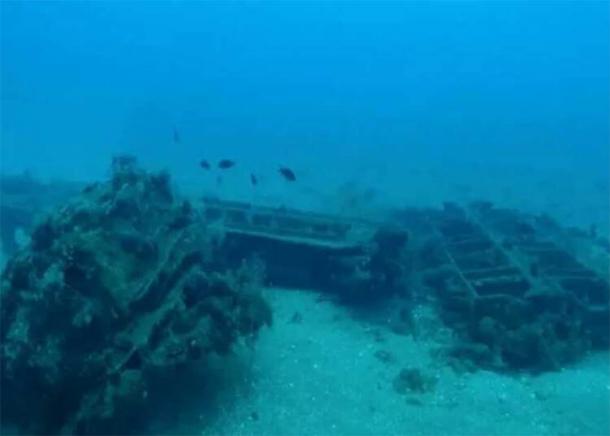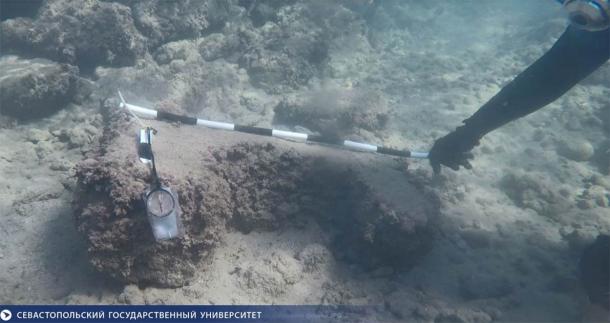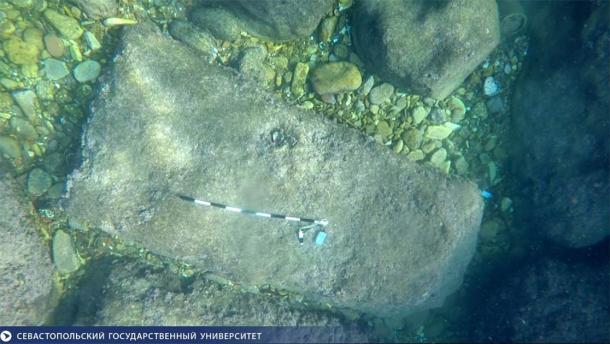Dmitry Tatarkov, director of the Institute of Social Sciences and International Relations, recently told Almasdar News that Russian scientists from Sevastopol State University have made a series of remarkable discoveries off the coast of the Syrian coast at Tartus. Not only have they found three ancient naval structures, but a full blown ancient port and a Roman sea fortress that were previously “unknown to science.”
Ṭarṭūs, or Tartus, is a city located in the County of Tripoli on the Mediterranean coast of Syria representing the country’s second largest city port city after Latakia. The port currently holds a small Russian naval facility and it has a long history of military usage. According to UNESCO, Tartus, which was called Tortosa by the crusaders, is regarded as an exceptional and representative model of the Syrian-Palestinian medieval town occupied by crusaders over two centuries.

Underwater divers have discovered naval structures, an ancient port and a Roman sea fortress off the coast of Syria at Tartus. ( Sevastopol State University )
Diving among the Ruins of Ancient Roman Fortress
Tartus city lies on the eastern coast of the Mediterranean Sea bordered by the Syrian Coastal Mountain Range to the east, and Arwad, the only inhabited island on the Syrian coast is located only a few kilometers off the shore. The researchers said the ancient port was discovered in the territorial waters of Syria during the second field season of the Russian-Syrian Archaeological Mission that was launched on the Mediterranean coast on October 20 2019. The subsea expedition was organized by the Center for Marine Research and Technology of Sevastopol State University with the support of the Ministry of Defense of the Russian Federation and the Institute of Oriental Studies of the Russian Academy of Sciences .

Part of the submerged Roman sea fortress off the coast of Tartus in Syria. ( Sevastopol State University )
Putting the discovery in historical context, Dr. Tatarkov said the structure was “a sea fortress from the 1st century AD.” This conclusion was reached after the divers found ancient “hydraulic structures, a lighthouse and four marble columns,” which together represent “a major finding,” added Tatarkov. The team archaeological divers first examined the sea floor using guided underwater vehicles. Besides the principal discovery of the ancient port, “three previously unknown berths from the ancient period were discovered, as well as the remains of ancient hydraulic structures : breakwaters and quay walls.”

More remains of the structures. ( Sevastopol State University )
Mapping Seemingly Insignificant Artifacts
Among the large architectural and hydraulic features that the divers recovered were hundreds of tiny fragments of ancient Greek amphorae (liquid holding containers), Phoenician pots, Egyptian vases, and household artifacts made of Roman stones. While these items might at first sound insignificant compared with the grandeur of the greater discovery, they are of huge archaeological significance.
Not only will these finds be jigsawed together by scientists to determine the life cycle of the ports that existed at the time, but they will also be used to help map the origins of the clay fragments. Knowing where the pottery fragments came from will allow the researchers to rebuild a map of the ancient maritime trade routes that connected this ancient port with the greater Mediterranean economy.
Originating before the Neolithic period, pottery and ceramics (fired pottery) are among the oldest of all human inventions, used in practical day to day life for storing food and drinks and in death rituals where clay pots were used to hold the cremated remains of the deceased. Pottery vessels were discovered in Jiangxi, China, dating back to 18,000 BC, and they survived this long because clay and other ceramic materials were fired at high temperatures to give them hard and durable forms.
Because ceramics have withstood the tests of time, this is why the archaeological names used to define ancient and prehistoric periods is taken from the type of pottery they produced. All Chinese, Cretan, Greek, Persian, Mayan, Japanese, and Korean cultures, as well as the modern Western cultures call their ancient cultures after pottery manufacturing styles.
“The ceramic materials that were found off the coast of Syria are now being processed in the Department of Antiquities of Tartous,” said Tatarkov Almasdar News . And it is expected that very soon the researchers will have completed an ancient ceramics map that will essentially lift the new discoveries from relative obscurity and will put the ancient port and Roman sea fortress “on the map.”
Top image: Marine archaeologists diving at the site of the Roman sea fortress. Source: Sevastopol State University
By Ashley Cowie
Related posts:
Views: 0
 RSS Feed
RSS Feed

















 January 29th, 2021
January 29th, 2021  Awake Goy
Awake Goy  Posted in
Posted in  Tags:
Tags: 
















